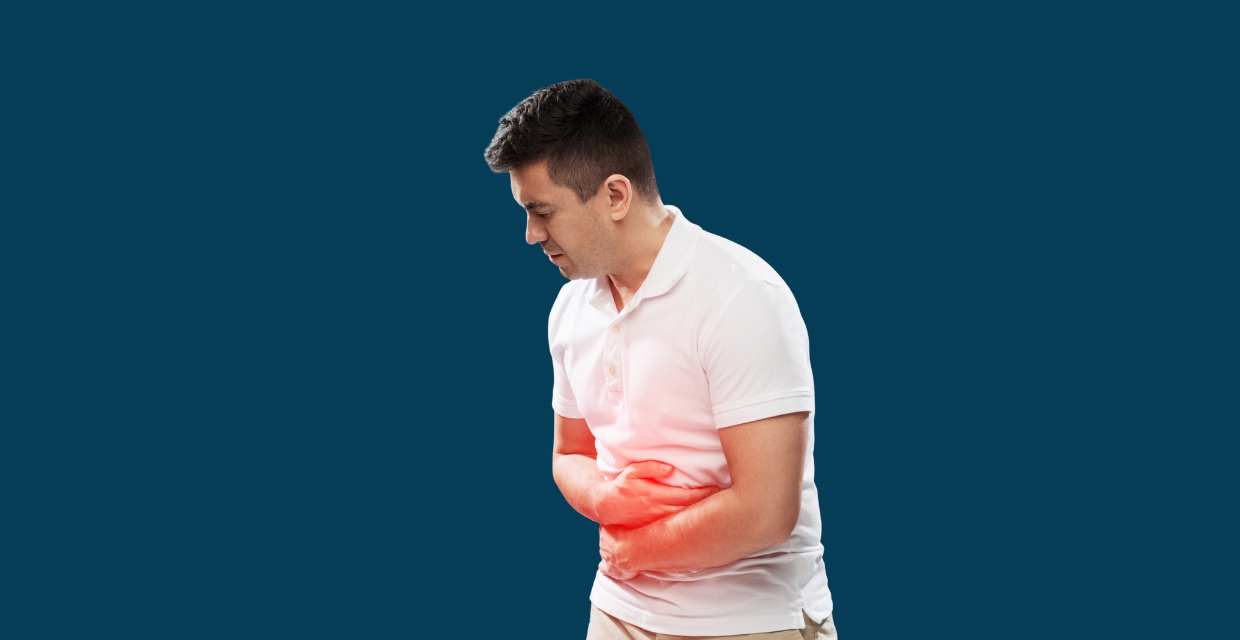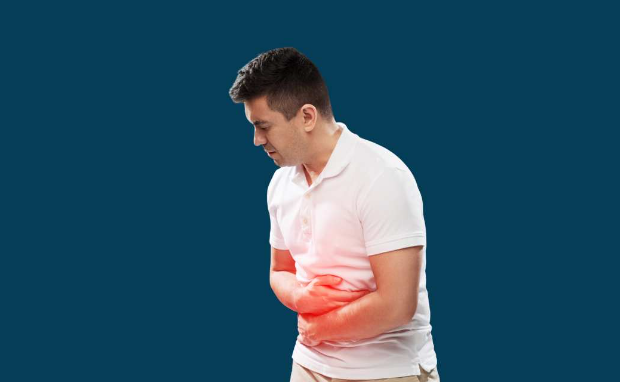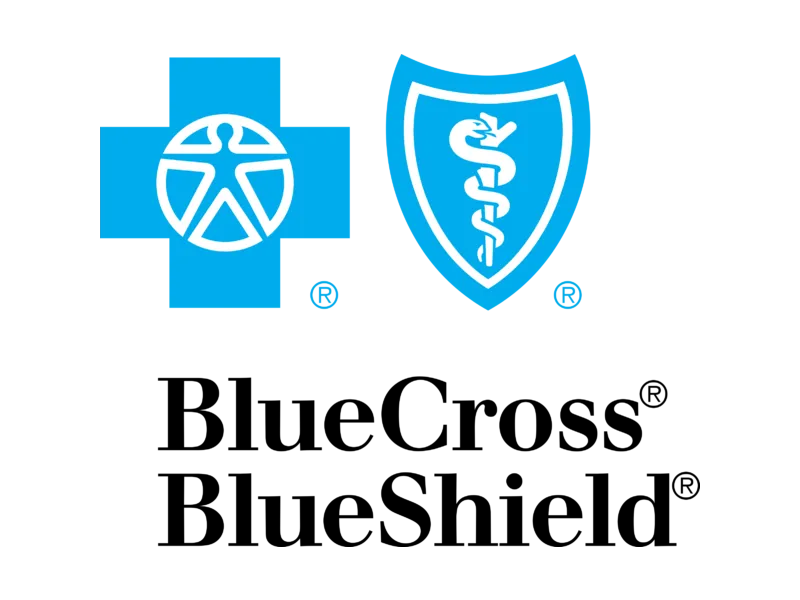Key Points
- Diverticulitis occurs when small pouches in the colon wall become inflamed or infected
- Poop can range from loose and watery during diarrhea to hard, small pellets during constipation
- Red or black stools can occur when there’s bleeding
- During flare-ups, start with clear liquids for 2-4 days, transition to low-fiber foods until symptoms resolve, then gradually reintroduce high-fiber foods
Living with diverticulitis can feel incredibly isolating and scary. The sudden, stabbing pain that doubles you over, the unpredictable bathroom visits, rushing to the hospital, and the constant anxiety around food choices can take over your life in ways that others just don't understand.
The first step to managing this inflammation of the colon is to understand it better.
This guide will help you learn more about what it is, what your poop looks like with diverticulitis, and what foods to eat and avoid during different phases.
What causes diverticulitis?
Think of your colon (large intestine) like a garden hose. Small balloon-like pouches called diverticula can form where weak spots develop in the hose wall.
The exact cause of diverticulitis is not completely understood, but these pouches can develop due to multiple factors, including:
- A low-fiber diet (which may create harder stools that increase pressure in the colon)
- Genetics
- Chronic inflammation
- Changes in gut bacteria
- Structural weaknesses in the colon wall
- Lifestyle factors like obesity, lack of exercise, smoking, and certain medications
Gia Eapen, MD, says, “Most people with these pouches may never have any issues with them. According to research, only less than 5% of people with these pouches will ever develop diverticulitis.”
However, diverticulitis occurs when one or more of these pouches becomes inflamed or infected, similar to how a small cut on your skin can become red, swollen, and painful.
Symptoms of diverticulitis
Diverticulitis symptoms include:
- Sudden, intense pain in the lower left abdomen
- Fever
- Nausea and vomiting
- Abdominal tenderness when touched
Changes in the bowel
- Sudden diarrhea or constipation
- Blood in stool (bright red, dark red, or black and tarry)
- Increased mucus in stool
- Small, hard "rabbit pellet" stools
- Alternating episodes of constipation and diarrhea
If you experience any of these symptoms, please consult a healthcare provider.
What does poop look like with diverticulitis?
Your poop can offer clues to whether you have diverticulitis or not.
You may notice:
- Red streaks, dark red or black stools: This indicates blood in your stool
- Shiny or greasy poop: More mucus in your stool can make it appear shiny
- Pellet-shaped: Constipation can lead to small, hard pellet-like poop
- A foul smell: If there is an infection or a bacterial overgrowth in your gut, your stools may smell quite foul
You may also alternate between very hard stools due to constipation and loose, watery diarrhea.
Why this happens
When diverticulitis flares up, your colon gets inflamed and goes into crisis mode, and your poop becomes a pretty clear indicator that something's not right.
The inflamed pouches in your colon create a domino effect of problems.
Why do you see dark poop?
The inflammation and infection can damage small blood vessels in the colon wall, which explains why you might see blood ranging from bright red (if the bleeding is near the exit) to dark black (if it's coming from higher up in your digestive tract).
Why do you see mucus in your poop?
When your colon is inflamed, your body tries to respond by cranking up mucus production to protect and soothe the irritated colon lining. This is why your poop may look shiny and slimy when you have diverticulitis.
Why does diverticulitis cause constipation and diarrhea?
The inflamed areas can throw your colon's normal rhythm completely off track. Instead of the smooth, coordinated muscle contractions that move things along nicely, diverticulitis creates erratic squeezing that leads to a cycle of constipation and diarrhea.
During the constipation phases, poop gets compressed into hard pellets because it moves too slowly through the inflamed colon. When diarrhea strikes, your irritated colon essentially hits the panic button and rushes everything through before proper water absorption can happen.
This creates a frustrating cycle where people with diverticulitis live in constant worry about their next meal, walking on eggshells around food choices, and always fearing another flare-up.
That's why understanding what to eat and avoid during different stages of diverticulitis is essential to managing this condition.
What is the best diet for diverticulitis?
Registered Dietitian, Rita Faycurry, RD, says, “Eating when you have diverticulitis isn't one-size-fits-all. What you can eat changes completely based on your current situation: dealing with an active flare-up, healing from one, or working to prevent future episodes.”
Research shows these phases require different approaches.
During a flare-up
If you have been diagnosed with diverticulitis and are currently experiencing a flare-up, your doctor may advise you to have clear broths only for a few days. This usually lasts 2-4 days, depending on how severe your flare-up is and how quickly you recover.”
What to drink during a diverticulitis flare-up
- Water
- Clear broths such as beef broth, chicken broth, and vegetable broth
- Clear fruit juices (except for highly acidic juices like orange juice): This includes apple juice, grape juice, and cranberry juice
- Gelatin
Eapen, MD, cautions, “Consult your healthcare provider or a registered dietitian before drinking plain tea or coffee during flare-ups, as they may worsen diarrhea or stomach pain for some people. Skip tea or coffee if they trigger digestive discomfort.”
Healing and recovery phase
This phase could take a few weeks and is dependent on each person’s recovery and medical needs.
Foods to eat in this healing phase are:
- Refined grains: white rice, white bread, pasta, cream of wheat, low-fiber rice crackers
- Lean proteins: Eggs, skinless chicken breast, turkey, fish, tofu
- Cooked vegetables: carrots, beans, potatoes, beets, sweet potatoes, squash. Remove the skin to make it even easier on your digestive system
- Cooked or canned fruit: Skinless
- Clear liquids: Water, broths like beef broth, chicken broth, vegetable broth. Clear fruit juices like apple juice, grape juice, and clear sodas
- Low-fat dairy (if you can tolerate it): Milk, yogurt, mild cheese, and cottage cheese can be eaten during this phase if your body is not sensitive to dairy
- Hard-boiled eggs
Eapen, MD, notes, “It’s important to stay hydrated during this phase, and it may help to eat smaller meals throughout the day instead of three large meals.”
Maintenance phase
Once you've recovered from a diverticulitis flare-up, the focus shifts to gradually reintroducing fiber to help prevent future discomfort, inflammation, and pain.
During this phase, the American Gastroenterological Association (AGA) recommends a fiber-rich diet with whole fruit, vegetables, whole grains, plant-based protein like legumes, and lean meat. They also advise avoiding the use of NSAIDs like ibuprofen (except aspirin).
Faycurry, RD, adds, “Remember to hydrate well as you introduce more dietary fiber into your diet.”
The challenges of a diverticulitis diet
There’s no one diet that works for everyone with diverticulitis. This is for a variety of reasons, including:
1. More research is needed
There is still a lot to learn about diverticulitis, and it may be related to other autoimmune disorders like irritable bowel syndrome (IBS). In fact, people who have had diverticulitis flare-ups are at a higher risk of developing IBS and other digestive conditions. So, even the maintenance phase may need to be adjusted based on how an individual reacts to specific foods.
Similarly, some research shows that a high-fiber intake is linked to a lower risk of diverticulitis or being hospitalized because of the condition, but European Society of Coloproctology guidelines find that a high-fiber diet is good for general health but not for preventing diverticulitis flares.
2. The link between stress and gut health
Worrying about ER visits, unpredictable pain, what's safe to eat, and when the next flare-up might hit—this is the life of someone dealing with diverticulitis. And, all this stress can make digestive conditions worse, because our brain and gut are closely connected. So, treatment must be a more holistic look into the mind-body connection and include stress management.
3. Personal sensitivities to food
Once inflamed, our gut may react differently to certain foods compared to before having diverticulitis. Also, some people may develop sensitivities to certain foods, and others may not.
Can you eat nuts, seeds, and corn?
For decades, people with diverticulitis were told to avoid nuts, seeds, and corn, but new research shows these foods pose no greater risk. However, some people may still experience diarrhea or stomach pain after eating them due to individual food sensitivities.
Can you eat red meat with diverticulitis?
Healthcare providers typically recommend a balanced diet with whole vegetables, fruits, grains, and lean proteins during the maintenance phase. This advice is based on some studies that found that a Western Diet rich in red meat, processed foods, and fatty foods was linked to a higher risk of diverticulitis.
While most experts agree that processed foods should be avoided, some doctors recommend low-carbohydrate diets like the keto or carnivore diet, despite these being heavy in red meat. Anecdotally, some people report on social media platforms that these diets help calm their digestive system.
Can a dietitian help with diverticulitis?
The uncertainty behind what to eat with diverticulitis can be frustrating and hard to navigate alone. A gut health dietitian can develop a personalized diverticulitis diet plan designed to work for your body and preferences.
They also provide science-backed tips, meal plan ideas, and even work with your doctor to optimize treatment, when needed.
And the good news is that most insurance plans cover Medical Nutrition Therapy (MNT) from a registered dietitian, so you may not have to pay anything at all or a minimum co-pay to get expert advice and ongoing support.
Get relief from diverticulitis from a gut health dietitian who accepts your insurance.
Frequently Asked Questions (FAQs)
What foods should to avoid for diverticulitis?
During a diverticulitis flare-up or when recovering from one, avoid high-fiber foods, beans and legumes, raw vegetables or uncooked fruit, fruit with skins, and high fiber like apples and berries. Additionally, avoid high-fat foods, sugary foods, and processed foods, including processed meat, because they can be inflammatory. Limit high FODMAP foods like onion, garlic, broccoli, artichokes, mushrooms, dairy (if you are sensitive to it), and whole grains.
During the recovery or maintenance phase, beyond avoiding processed foods, it's important to identify whether you're sensitive to red meat, dairy, nuts, seeds, corn, or other high FODMAP foods, and eliminate any that trigger your symptoms.
Can I eat bananas if I have diverticulitis?
Yes, you can eat bananas if you have diverticulitis. They are part of the BRAT diet (Bananas, Rice, Applesauce, Toast), which is recommended for digestive conditions.
How long does it take to heal from diverticulitis?
Certain types of diverticulitis (uncomplicated diverticulitis) can take a few days to 1-2 weeks (12-14 days) with antibiotics and a modified diet.
Can I drink coffee with diverticulitis?
Registered Dietitian, Faycurry, RD, says, “The answer depends on whether caffeine is a trigger for your diverticulitis symptoms or not. The science is still out about whether coffee is okay or not. Caffeine has been known to stimulate the body to make more stomach acid. Some studies link caffeine to cramping, diarrhea, and stomach pain, which can add to the discomfort during diverticulitis flare-ups. Then again, one study found no association between caffeine and the symptoms of diverticulitis.”
Diverticulitis needs a personalized approach to diet.
Find a gut health dietitian to get a diverticulitis diet plan , covered by insurance.
The views expressed by authors and contributors of such content are not endorsed or approved by Fay and are intended for informational purposes only. The content is reviewed by Fay only to confirm educational value and audience interest. You are encouraged to discuss any questions that you may have about your health with a healthcare provider.
Sources
Fay Nutrition has strict sourcing guidelines and relies on peer-reviewed studies, academic research institutions, and medical associations. We avoid using tertiary references.
- Epidemiology, Pathophysiology, and Treatment of Diverticulitis (January 17, 2019)
https://pmc.ncbi.nlm.nih.gov/articles/PMC6716971/ - Overview: Diverticular disease and diverticulitis (December 28, 2021)
https://www.ncbi.nlm.nih.gov/books/NBK507004/ - AGA Clinical Practice Update on Medical Management of Colonic Diverticulitis: Expert Review (February 01, 2022)
https://pmc.ncbi.nlm.nih.gov/articles/PMC7878331/ - Increased Risk for Irritable Bowel Syndrome After Acute Diverticulitis (March 21, 2013)
https://pmc.ncbi.nlm.nih.gov/articles/PMC5731449/ - Role of Dietary Habits in the Prevention of Diverticular Disease Complications: A Systematic Review (April 14, 2021)
https://pmc.ncbi.nlm.nih.gov/articles/PMC8070710/ - European Society of Coloproctology: guidelines for the management of diverticular disease of the colon (July 07, 2020)
https://onlinelibrary.wiley.com/doi/10.1111/codi.15140 - Nut, Corn And Popcorn Consumption And The Incidence Of Diverticular Disease (August 27, 2008)
https://pmc.ncbi.nlm.nih.gov/articles/PMC2643269/ - Diverticulitis – An Update from the Age Old Paradigm (October 01, 2021)
https://pmc.ncbi.nlm.nih.gov/articles/PMC7575828/ - Effects of Coffee on the Gastro-Intestinal Tract: A Narrative Review and Literature Update (January 17, 2022)
https://pmc.ncbi.nlm.nih.gov/articles/PMC8778943/ - A prospective study of alcohol, smoking, caffeine, and the risk of symptomatic diverticular disease in men (May 1995)
https://pubmed.ncbi.nlm.nih.gov/7606311/











